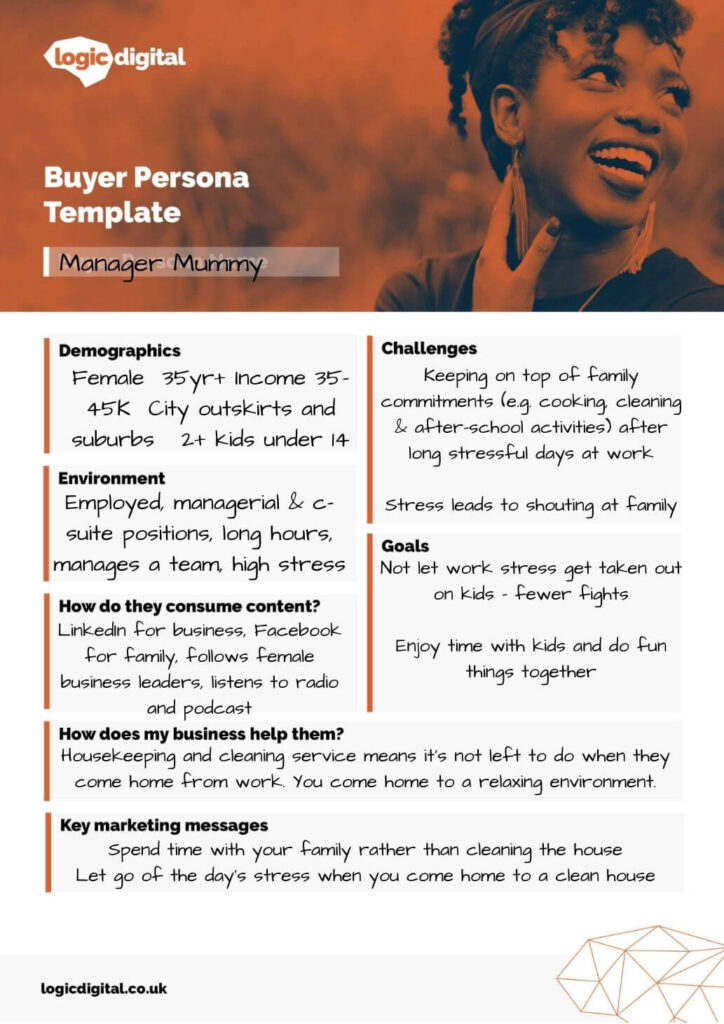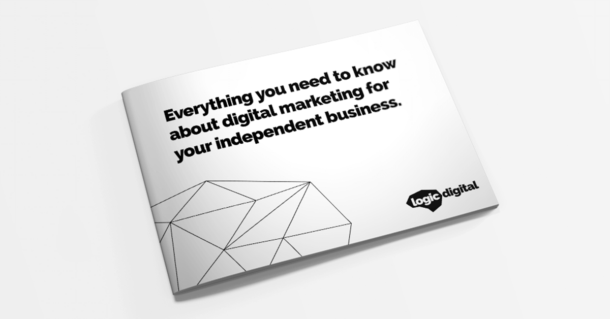We talk about buyer personas a lot in our articles because they are the key to a successful marketing campaign. Everything from the platforms you’re active on to the imagery you use on social media should be informed by your buyer personas.
In this article, we’ll walk you through how to create a buyer persona – including a nifty little template you can use to create your own.
What is a buyer persona?
A buyer persona is a representation of your types of customers. Depending on the range of products and services you sell you may have a number of different buyer personas to represent each type of customer for your business.
Creating a buyer persona allows you to tailor your marketing activities, materials and messages to ensure they reach and resonate with the relevant audience. E.g. you identify that your buyer persona is most active on TikTok, so you now know you shouldn’t prioritise ads on Facebook.
Creating your buyer persona
There are many ways to build out a buyer persona – some information is more relevant in certain industries that others. Below we have shared a general buyer persona template you can follow regardless of industry or business type.
The information you put into your buyer persona should be researched and able to be supported with real life examples – whether these be from your own business data, market research or anecdotal evidence from conversations you’ve had. Don’t make any assumptions when creating your buyer persona. If you assume wrong, your marketing efforts could reach the wrong audience or share the wrong message.

Buyer Persona Name
Giving your buyer persona a name enables you to simply communicate these within your marketing activity – nobody is going to remember anything about “Buyer Persona 4” very easily. Ideally, your persona name should include a key characteristic that is relevant to your targeting (and if you can include some alliteration, bonus! They are much easier to remember) e.g. “Mummy Maddy”, “Tired Tara” or “Safe Simon”.
Demographics
The next part of your buyer persona should be some basic demographic information about them. This can become particularly useful when you want to use imagery that your buyer personas will find relatable and relevant. Demographic information will also give you a starting point for how they consume content and what messages really work for them. Information to include in this section could be
- Age
- Gender
- Sexuality
- Location(s)
- Income
- Dependents/children
Environment
Next, you’ll want to make notes about their regular environment – depending on your business, this may be their work environment or home situation. Environmental information to include in this section could be
- Employment status and/or working hours
- Employment industry
- Job Role (and responsibilities)
- Regular commitments
- Day-to-day activities
How do they consume content?
By identifying how your buyer persona primarily consumes content, you can ensure that your marketing activities are present in those spaces. E.g. do they primarily use one social channel over another? Do they get information to support their job role from online events and conferences or do they mainly use LinkedIn? Information to include in this section could be
- Preferred social media channels
- Brands and influencers they follow
- How do they get their news? (e.g. print, online, radio)
- Where do they go for entertainment? (e.g. podcasts, streaming services, TV)
Goals & Challenges
Defining your buyer persona’s goals and challenges is one of the most important steps since your marketing messaging should be focused on how you can help your audience solve their challenges and reach their goals.
Some examples of goals are
- Improve team productivity
- Increase business profit margins
- Save enough money for a holiday
Some examples of challenges are
- Struggling to balance work with childcare
- Unable to meet deadlines set by managers
- Competitors undercutting product prices
How does my business help them?
Now that you’ve identified the key challenges and goals that your buyer personas have, you can clearly (and succinctly) define how your business is going to help them. Think of this as an elevator pitch – what is the solution and how exactly will it help them?
This provides you with a clear focus for your marketing messaging as well as any conversations you need to have to close the deal.
An example of this is:
“Our housekeeping and cleaning service means it’s not left for you to do when you come home from work! No more stressing and more time to relax with your family.”
Key marketing messages
The final part of your buyer persona should include some key messages that you want to convey in your marketing – this will help you keep your marketing focused on your buyer personas rather than going off on a tangent. It will also make it easier for any marketers to stay aligned with your core messaging in the future. E.g.
- Free up time to spend with your family
- Reduce stress that can cause arguments at home
Taking the time to create a buyer persona could be the difference between a successful and unsuccessful marketing campaign. Download our free buyer persona template or get in touch for support creating your personas.
Want more awesome digital marketing tips for free?





